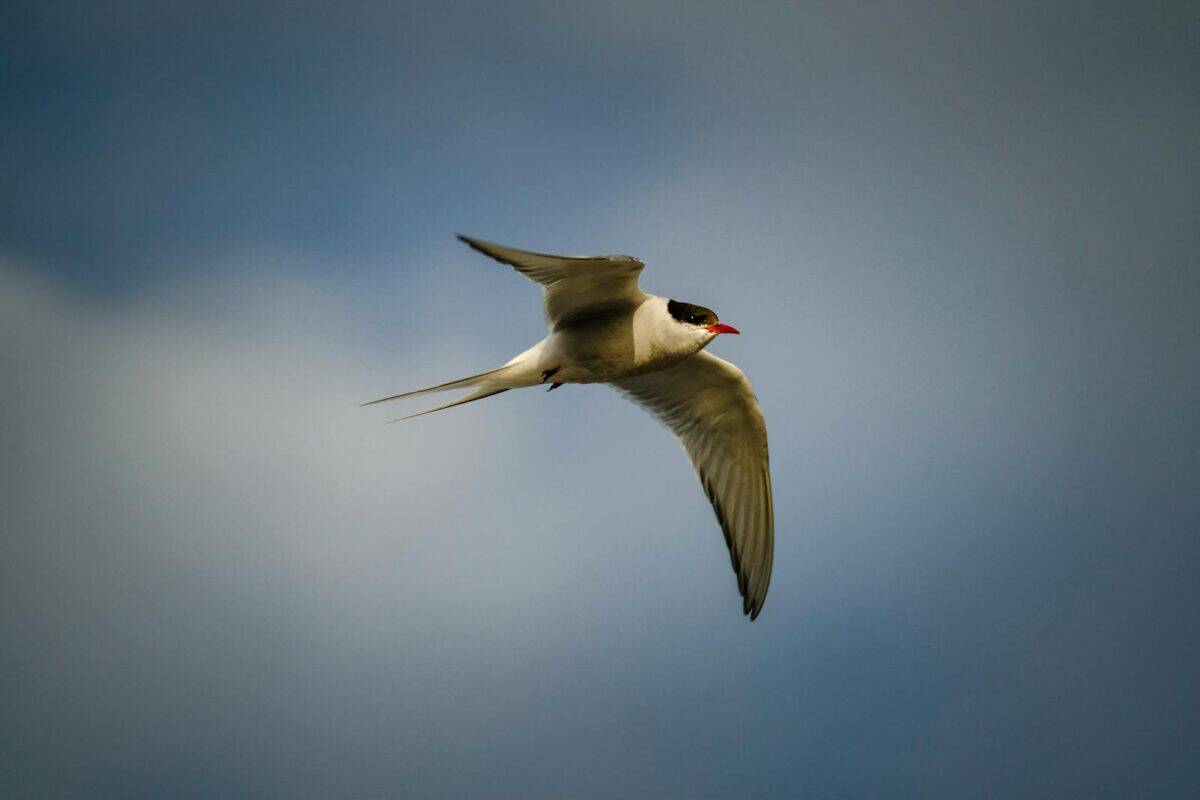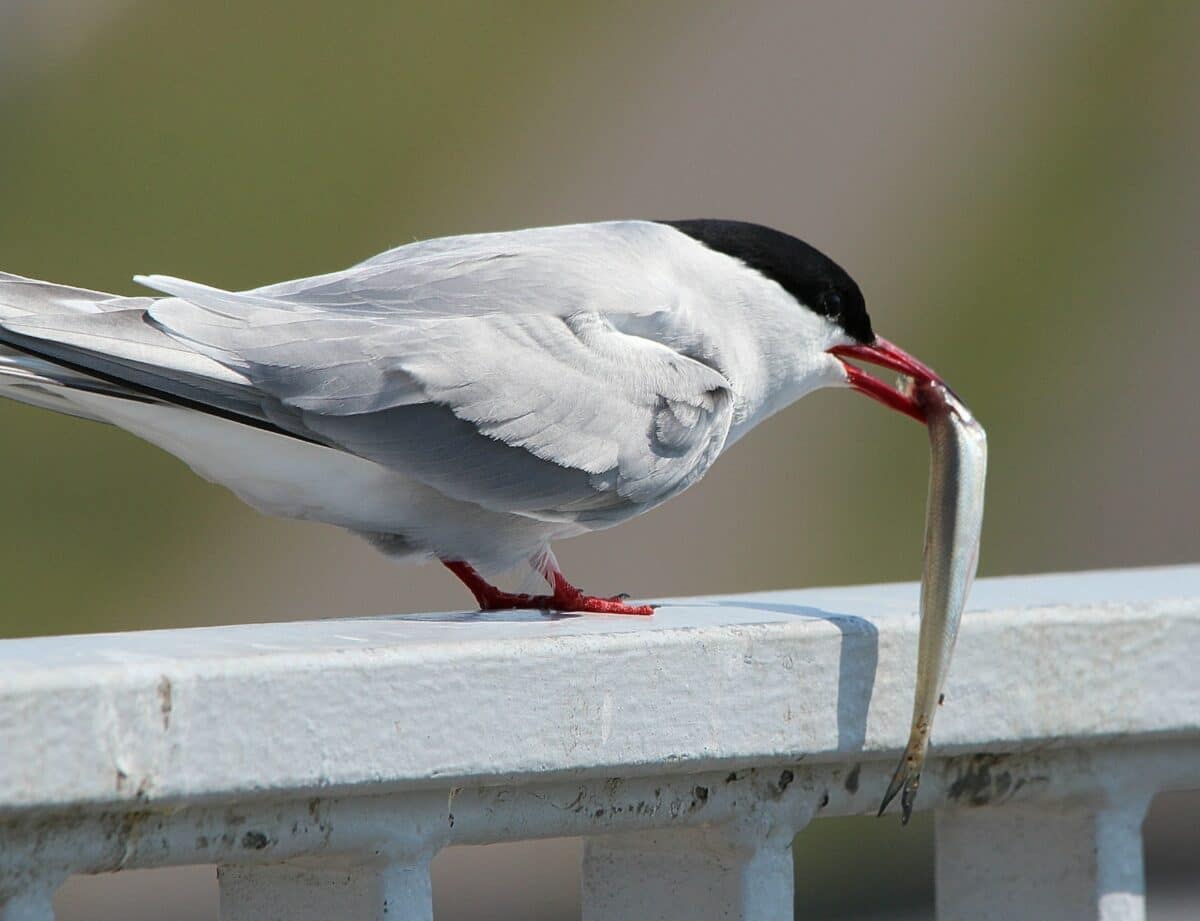In the vast theater of nature’s wonders, few phenomena capture human imagination quite like animal migration. These epic journeys, driven by ancient instincts and seasonal rhythms, showcase the remarkable adaptability and endurance of Earth’s creatures. Among these travelers, birds stand out as the ultimate masters of long-distance migration. Their lightweight bodies, efficient metabolisms, and remarkable navigation abilities allow them to undertake journeys that would seem impossible based on their size alone. But one migrator soars above all others, completing the longest migration on Earth—the Arctic Tern (Sterna paradisaea), a slender seabird whose annual round trip spans from pole to pole, traversing more than 44,000 miles of open ocean and diverse landscapes. This extraordinary journey represents not just a triumph of evolution, but a powerful reminder of how even small creatures can accomplish feats of astounding proportion when guided by the ancient wisdom encoded in their genes.
The Arctic Tern: An Introduction to an Exceptional Migrator

The Arctic Tern is a medium-sized seabird weighing just 3.5-4.5 ounces (100-125 grams) with a wingspan of about 31 inches (80 cm). Its appearance is characterized by a sleek white body, black cap, red bill, and distinctive forked tail that has earned it the nickname “sea swallow” in some regions. These birds breed in the circumpolar regions of the Arctic and sub-Arctic, establishing colonies on coastlines, islands, and tundra habitats during the brief northern summer. Despite their delicate appearance, Arctic Terns are remarkably aggressive in defending their nesting territories and possess exceptional flying capabilities that allow them to hover gracefully above water before plunging to catch fish. Their most remarkable characteristic, however, is neither their appearance nor their fishing prowess, but rather their unparalleled migratory behavior that takes them from one end of the Earth to the other—and back again—every year of their 15-30 year lifespan.
The Pole-to-Pole Journey: Mapping the Longest Migration

The Arctic Tern’s migration route was long a mystery to scientists until the development of lightweight tracking technology made it possible to follow individual birds throughout their journey. What researchers discovered was astonishing: these birds travel from their Arctic breeding grounds to Antarctica and back annually, completing a zig-zagging route across the Atlantic Ocean that can total more than 44,000 miles (70,000 kilometers) round-trip. A 2010 study published in the Proceedings of the National Academy of Sciences tracked several Arctic Terns from Greenland to their wintering grounds in Antarctica, revealing that some birds traveled well over 50,000 miles in a single year, with one record-setting individual covering approximately 59,650 miles (96,000 kilometers). This incredible distance means that over its lifetime, a single Arctic Tern may fly more than 1.5 million miles—equivalent to three round trips to the Moon or nearly 60 complete circumnavigations of the Earth.
Evolutionary Advantages: Why Travel So Far?

The extraordinary length of the Arctic Tern’s migration raises an obvious question: why travel so far? The answer lies in an evolutionary strategy known as “following the summer.” By migrating between the Arctic and Antarctic, Arctic Terns essentially experience two summers each year, maximizing their exposure to daylight hours and the abundant food resources that come with summer conditions. In the Arctic breeding season, they take advantage of the phenomenon of midnight sun, which provides 24 hours of daylight for feeding their chicks. When autumn approaches in the north, they begin their southward journey to the Antarctic, where they will experience the southern summer. This strategic movement allows Arctic Terns to spend approximately eight months of each year in daylight conditions, more than any other species on Earth. The extra sunlight translates directly into increased feeding opportunities, as these birds primarily hunt small fish and marine invertebrates that are more easily spotted in daylight hours.
Navigation Mastery: How Arctic Terns Find Their Way

The navigational capabilities of Arctic Terns represent one of the most sophisticated guidance systems in the animal kingdom. Research indicates that these birds rely on a multi-modal approach to navigation, integrating several different methods to maintain their course over vast oceanic expanses. They appear to possess an internal magnetic compass that allows them to sense Earth’s magnetic field—a capability believed to involve specialized cells containing magnetite crystals. This magnetic sense is complemented by celestial navigation using the sun and stars, along with the ability to detect polarized light patterns in the sky even during cloudy conditions. Visual landmarks likely play a role during coastal portions of their journey, while olfactory cues from the ocean—essentially “smelling” their way along familiar routes—may also contribute to their navigational toolkit. Perhaps most remarkably, young Arctic Terns undertaking their first migration do so independently of adults, suggesting that much of this navigational ability is innate rather than learned, encoded in their genetic makeup through millions of years of evolutionary refinement.
Physiological Adaptations: Built for Endurance Flight

The Arctic Tern’s body is a marvel of evolutionary engineering optimized for long-distance flight. Their lightweight skeletal structure features hollow bones that reduce overall mass while maintaining strength. The tern’s wings are long and narrow—an adaptation known as high aspect ratio wings—which maximizes lift while minimizing drag during sustained flight. Their metabolic efficiency is exceptional, with the ability to enter a state similar to “cruise control” during long oceanic crossings, where wing beats are precisely calibrated to achieve optimal energy expenditure. Studies have shown that during long migration legs, Arctic Terns can sleep while flying, with one brain hemisphere remaining active while the other rests—a phenomenon known as unihemispheric slow-wave sleep. Their digestive system is highly efficient, extracting maximum energy from consumed prey, while their kidneys have specialized adaptations for water conservation and salt excretion, allowing them to drink seawater when necessary. These physiological attributes work in concert to create a biological flying machine capable of sustaining one of nature’s most demanding journeys year after year.
Refueling Strategies: Eating Across the Globe

The Arctic Tern’s migration is not a non-stop flight but rather a series of journeys interspersed with critical refueling stops. Their feeding strategy varies by location and season, showing remarkable flexibility. In northern breeding grounds, they primarily consume small fish like capelin, sand lance, and herring, often plunge-diving from heights of 3-20 feet to catch prey just below the water’s surface. During migration, they become opportunistic feeders, targeting productive marine areas such as upwelling zones, continental shelves, and areas of oceanic convergence where nutrients concentrate and fish are abundant. Tracking studies have revealed that Arctic Terns make deliberate detours during migration to visit known productivity hotspots in the North Atlantic, such as the waters off Newfoundland and the Azores. In Antarctic waters, their diet shifts to include more crustaceans, particularly krill that flourish in the Southern Ocean. This adaptive feeding strategy enables them to maintain the energy reserves necessary for sustained flight, with some individuals increasing their body weight by up to 30% at key stopover sites before tackling the next leg of their journey.
The Impact of Climate Change on Migration Patterns

Climate change is beginning to disrupt the delicate timing and conditions of the Arctic Tern’s migration in ways that may threaten their remarkable journey. Rising ocean temperatures are altering the distribution and abundance of the fish species they depend on, potentially creating “food deserts” along traditional migration routes. Changing patterns of sea ice formation and retreat in polar regions affect both the timing of prey availability and the suitable habitat for breeding. More frequent and intense ocean storms associated with climate change can force terns to expend precious energy navigating around weather systems or flying through adverse conditions. Research published in the journal Global Change Biology indicates that some Arctic Tern populations have already begun shifting their migration timing and routes in response to these changes, departing breeding grounds earlier and taking longer routes to avoid areas where prey abundance has declined. Perhaps most concerning, the very cues that terns use for navigation—including magnetic field characteristics and prevailing wind patterns—may be altered by climate change, potentially creating navigation challenges for a species that relies on predictable global conditions to complete its extraordinary journey.
Record-Breaking Statistics: By the Numbers

The Arctic Tern’s migration is a phenomenon best understood through its staggering numbers. The average round-trip migration spans approximately 44,000-49,700 miles (70,000-80,000 km) annually, with exceptional individuals recording journeys exceeding 59,000 miles (96,000 km) in a single year. During peak migration, Arctic Terns can maintain an average speed of 25-35 miles per hour (40-56 km/h) over open ocean. The one-way journey from Arctic to Antarctic typically takes 3-4 months, with birds departing northern breeding grounds in August and arriving in Antarctic waters by November. Over a 30-year lifespan, a single Arctic Tern may fly more than 1.5 million miles (2.4 million km), the equivalent of approximately three round trips to the Moon. The population traverses through the territories of at least 25 different countries during migration, making this species truly international. At their Antarctic destination, some birds reach latitudes as far south as 78°S, less than 800 miles (1,287 km) from the South Pole. During their annual journeys, individual terns may experience more hours of daylight than any other creature on Earth—up to 21 hours daily averaged across the year—by following the sun between hemispheres.
Comparing Migrations: How Other Species Measure Up

While the Arctic Tern holds the title for longest migration, other remarkable avian travelers deserve recognition. The Bar-tailed Godwit (Limosa lapponica) completes the longest non-stop flight of any bird, traveling 7,500 miles (12,000 km) from Alaska to New Zealand without a single break for food or rest—an 8-9 day continuous journey. The Rufous Hummingbird (Selasphorus rufus), weighing just 0.1-0.2 ounces (3-4 grams), migrates up to 3,900 miles (6,276 km) between Mexico and Alaska—the longest migration relative to body size. The Great Frigatebird (Fregata minor) can stay aloft for up to two months without landing, sleeping in flight while navigating over the Indian Ocean. Among non-avian migrators, the Gray Whale (Eschrichtius robustus) holds the mammalian distance record, swimming 11,000 miles (17,700 km) round-trip annually between Mexican breeding lagoons and Arctic feeding grounds. Even insects join this elite group of travelers, with Monarch butterflies (Danaus plexippus) completing a multi-generational migration spanning 3,000 miles (4,800 km) between Mexico and Canada. Yet despite these impressive journeys, the Arctic Tern’s annual pole-to-pole route remains unmatched in its length, cementing this species’ status as Earth’s ultimate long-distance traveler.
Conservation Challenges: Protecting a Global Migrator

The conservation of Arctic Terns presents unique challenges precisely because their range encompasses the entire globe. These birds encounter different threats across their vast migratory route, from plastic pollution and oil spills in the open ocean to direct disturbance of breeding colonies in the north. Commercial fishing operations can deplete the small fish populations terns depend on, while coastal development increasingly encroaches on traditional breeding grounds. The international nature of their journey means that effective conservation requires coordinated action across dozens of countries—a diplomatic and logistical challenge. Several international agreements, including the Agreement on the Conservation of African-Eurasian Migratory Waterbirds (AEWA) and the Convention on Migratory Species (CMS), provide frameworks for such cooperation, but implementation remains inconsistent. Conservation efforts currently focus on protecting key stopover sites, breeding colonies, and wintering grounds, as well as reducing marine pollution along major flyways. Citizen science initiatives like eBird have proven valuable in tracking population trends and identifying previously unknown staging areas. Despite these efforts, global population estimates indicate a concerning decline of approximately 30% over the past three decades, with some local populations experiencing even steeper drops—a warning sign that this remarkable migrator faces an uncertain future without enhanced protection.
Cultural Significance: The Arctic Tern in Human Societies

Throughout history, the Arctic Tern has played a significant role in the cultures of peoples living along its migratory route. To the Inuit of the Arctic regions, the arrival of “imakitsoq” (the Inuit name for Arctic Tern) signaled the return of summer and the renewal of life after the long polar winter. These birds featured in traditional stories as messengers between the human world and the spirit realm, capable of traversing not just physical distance but metaphysical boundaries. Norse mythology similarly incorporated the tern as a guide for lost sailors, with folklore suggesting that following the direction of migrating terns would lead ships to land. In Celtic traditions, particularly in coastal Scotland and Ireland, terns were considered protective spirits of fishermen, with their presence over fishing boats interpreted as a sign of an imminent good catch. Modern cultural references continue this tradition of fascination—the Arctic Tern has inspired numerous literary works, nature documentaries, and even aerospace designs seeking to emulate its efficiency of movement. The bird appears on postage stamps in at least 15 countries and serves as a powerful symbol in environmental education, where its global migration is used to illustrate the interconnectedness of Earth’s ecosystems and the borderless nature of conservation challenges.
The Arctic Tern’s pole-to-pole migration stands as one of nature’s most awe-inspiring phenomena, a testament to the extraordinary capabilities that can evolve when selective pressures favor extreme specialization. This remarkable journey reminds us that geographic boundaries—so central to human politics and identity—are meaningless to many of Earth’s creatures who follow ancient pathways dictated by the rhythms of seasons and the availability of resources. As we track these birds across oceans and continents, we gain not just scientific knowledge but a profound perspective on our interconnected planet, where events in the Arctic can affect conditions in Antarctica and everywhere in between. Perhaps most importantly, the Arctic Tern’s migration challenges us to think globally about conservation, recognizing that protecting even the most distant and seemingly untouched ecosystems is essential for maintaining the intricate web of life that extends across our entire planet.
- America’s Most Endangered Mammals And How to Help - August 9, 2025
- The Coldest Town in America—And How People Survive There - August 9, 2025
- How Some Birds “Steal” Parenting Duties From Others - August 9, 2025

